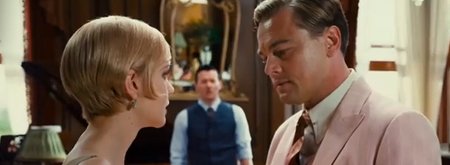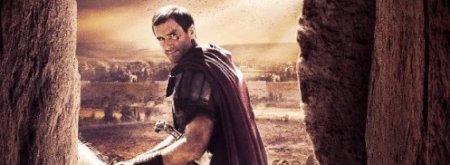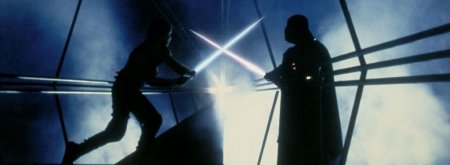The Great Gatsby
When young graduate Nick Carraway (Tobey Maguire) moves to Long Island in New York, he becomes fascinated by his mysterious neighbour Jay Gatsby (Leonardo DiCaprio), who lives in a mansion and throws wild, expensive parties. Obsessed with a married woman named Daisy Buchanan (Carey Mulligan), Gatsby pours everything into winning her over. The two had a relationship years ago, which ended when Daisy married the wealthy Tom (Joel Edgerton), and when they meet again through Nick – who is Daisy’s cousin – their romance rekindles.
Built on Sand
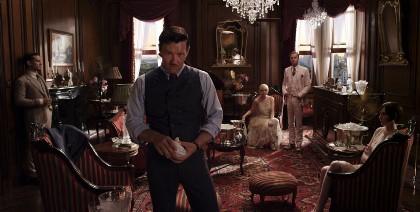
© Bazmark Film III PTY Ltd, 2013. Used by courtesy of Warner Bros. Pictures.
Warning: This article contains plot spoilers.
However, Gatsby is not all that he seems, and it soon becomes apparent that the affair can’t end well. As his secret past threatens to catch up with him, everything begins to fall apart. Will Daisy really leave her unfaithful husband, and the life of privilege he offers her? Can Gatsby ever get what he truly wants, or are all of his dreams really just an illusion?
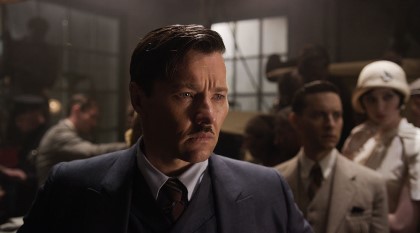
© Bazmark Film III PTY Ltd, 2013. Used by courtesy of Warner Bros. Pictures.
Love story
The Great Gatsby is possibly the most lauded American novel in literature and, depending on the source, Australian director Baz Luhrmann is either the best or the worst person imaginable to have brought it to the screen. Films like Romeo + Juliet (1996) and Moulin Rouge (2001) demonstrate his affinity for tragic love stories and displays of decadence, as well as his fondness for theatrical overstatement and postmodern pop culture mash-ups. In his hands, F. Scott Fitzgerald’s much-studied novel becomes a whirlwind of sparkling visuals and high drama. Luhrmann’s stylised work has always divided opinion, and true to form, this The Great Gatsby has split reviewers down the middle.[1]
Similarities to Moulin Rouge are clear from the outset, as a tired and damaged young man looks back over his naïve arrival in a new city, and the events of a love affair which came to a sorry end. Unlike Ewan McGregor’s Christian, however, Nick Carraway is an observer, relating Daisy and Gatsby’s tale as somebody who was both inside and outside of the story. According to critic Tim Brayton, it’s this attempt to place the events of The Great Gatsby in a "tragic romance" template which lets the film down[2]. Arguably, Daisy and Gatsby can’t simply be played as substitute figures for Romeo and Juliet, or Christian and Satine, because their story (at least as Fitzgerald intended it) isn’t really about love at all.
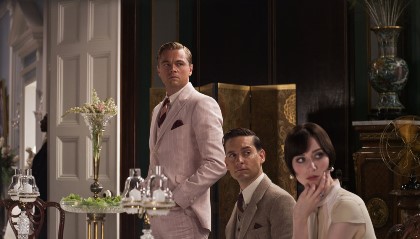
© Bazmark Film III PTY Ltd, 2013. Used by courtesy of Warner Bros. Pictures.
A happy ending fails to materialise for the lovers in Romeo + Juliet and Moulin Rouge because of outside injustice – the warring Capulets and Montagues, the Duke and Satine’s illness. But in The Great Gatsby, the injustice of the class system (which will never truly allow Gatsby to be seen as Tom’s equal) is only part of the picture. The real tragedy of the story comes in the small scene – downplayed by Luhrmann – in which it’s revealed that Nick, not Daisy, has called Gatsby in the moment that he is shot. Even if Gatsby had lived and the obstacles to their relationship had been removed, she would not have been enough for him. The flawed reality of Daisy can’t live up to the towering ideal.
It’s here that the symbolic dimension of Fitzgerald’s story comes into play. Gatsby is not simply one man chasing after one woman, but a whole culture – perhaps even a whole human race – chasing after an unattainable dream. The Great Gatsby is about the sickness of the culture in a specific time and place, and it’s about the universal sickness of the human heart.
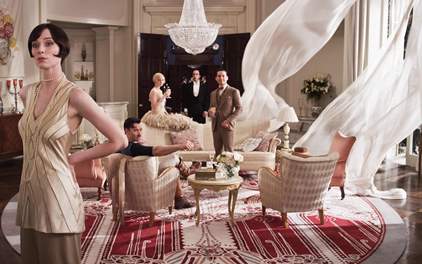
© Bazmark Film III PTY Ltd, 2013. Used by courtesy of Warner Bros. Pictures.
Written yesterday
Fitzgerald’s novel, published in 1925, did not really achieve either popularity or acclaim until decades later. Some have attributed this to the book’s prophetic quality. While the nonstop party of the 1920s was still in motion, its bleak diagnosis of the cracks in the culture went unheard. It wasn’t until the Wall Street Crash, the subsequent depression and the horrors of the Second World War that its message was embraced. Fitzgerald saw that, in the aftermath of the First World War, the essence of the American Dream (ostensibly the freedom to become whoever you want to be through hard work) had been boiled down to mere materialism. Greed ruled, concealing the dangers of such reckless spending, the failure of real social mobility, and the moral and spiritual bankruptcy at the centre of it all.
It’s no coincidence that a major Great Gatsby adaptation has arrived at our own particular cultural moment. The contemporary touches in Luhrmann’s film remind us just how strongly these themes resonate, caught as we are in the middle of another global economic crisis. "In a time with a glittering but unreliable economy, and a prevalent sense that we have lost our way", notes producer Douglas Wick, "Gatsby could have been written yesterday." All of this means we can’t simply shake our heads at the film’s decadent partygoers from beyond the screen – we’re challenged to recognise ourselves and our weaknesses in them.
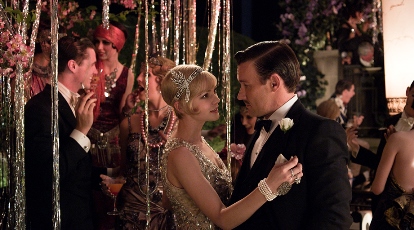
© Bazmark Film III PTY Ltd, 2013. Used by courtesy of Warner Bros. Pictures.
In a short story told by Jesus, he claimed that someone who bases the meaning and purpose of their life on anything other than God "is like a foolish man who built his house on sand. The rain came down, the streams rose, and the winds blew and beat against that house, and it fell with a great crash" (Matthew 7:26-27). As a culture and as individuals, it’s clear that we "build on sand" in many different ways, materialism being one of the most prevalent. Like Fitzgerald’s partygoers, and like the builder in the parable, we set ourselves up for a ‘crash’ when we treat the transient as though it were the ultimate.
Something real
Nick Carraway observes that Gatsby seems to have an unusually great capacity for hope. His smile "seemed to understand you and believe in you just as you would like to be understood and believed in." In other words, Gatsby appears to be the embodiment of a man living out the American Dream in its fullest and purest form, or at least, a man on the verge of it. As he reaches for the green light at the end of Daisy’s dock, he reaches for the completion of the dream.
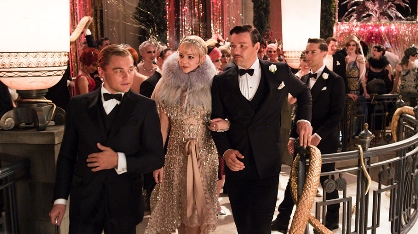
© Bazmark Film III PTY Ltd, 2013. Used by courtesy of Warner Bros. Pictures.
But just as Daisy can’t support the weight of his obsessive devotion, and just as the economy can’t long support the decadence of the ’20s, Gatsby’s dream is destined to unravel. Towards the end of the film, we see the glittering myth which he’s built around himself dissolve to reveal a dark core of shame and inadequacy. Deep down, he’s still the impoverished farm boy James Gatz, and nothing he’s gained since has truly been able to change that. Gatsby has believed wholeheartedly in the promises which America seemed to make, and the promises have turned out to be hollow.
It’s more than a reflection on a society which can’t deliver on its own founding ethos. Writer Pete Lowman observes that Gatsby’s tragedy encapsulates "the missed fulfillment of the whole western vision" [3] – the ‘crash’ which followed the release of moral and spiritual certainties tied up in a Christian worldview. It’s a crash, arguably, which is still in motion. Fitzgerald’s story expresses the deep (unconscious?) anxiety and loss felt by a culture in which God, and so ultimate meaning, seems to have become absent [4]: we might experience a longing for transcendence, but if the heavens are empty, we’re destined to search in vain. "There is no reality anywhere that is adequate to the grandeur of [Gatsby’s] dreams."
What if we have to build on the transient because there is no ultimate? If God is dead – as Nietzsche declared him to be four decades before The Great Gatsby was written – then the deepest aspirations of the human race are built on sand. All of our big ideas about hope, purpose, identity and love are, as Fitzgerald described Gatsby’s dream, a "rock ... founded securely on a fairy’s wing." The truth about God’s existence and God’s nature determines whether or not, when we reach out for these things, we can take hold of something real.
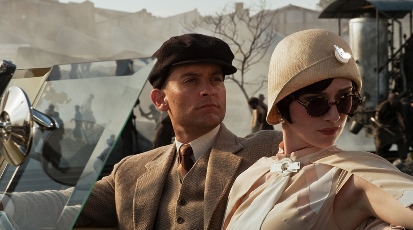
© Bazmark Film III PTY Ltd, 2013. Used by courtesy of Warner Bros. Pictures.
Questions for reflection
- ‘Faith is the confidence that what we hope for will actually happen; it gives us assurance about things we cannot see.’ (Hebrews 11:1)
What does Gatsby place his faith in, and why is he ultimately let down? What do we place our faith in, as individuals and as a culture, and is it worthy of our confidence? How can we know?
- ‘The rain came down, the streams rose, and the winds blew and beat against that house, and it fell with a great crash.’ (Matthew 7:27)
What do you make of Jesus’s teaching about building our lives on God rather than the transitory things which the world offers? What does the story of the builder imply about the relationship between the ‘spiritual’ and the ‘real’ – and how might this contrast to our culture’s view of this relationship?
Film title: The Great Gatsby
Keywords: Love, decadence, class, the American Dream, transcendence
Director: Baz Luhrmann
Screenplay: Baz Luhrmann and Craig Pearce, based on the novel by F. Scott Fitzgerald
Starring: Leonardo DiCaprio, Tobey Maguire, Carey Mulligan, Joel Edgerton
Distributor: Warner Bros. (USA/UK)
Cinema Release Date: 10 May 2013 (USA); 16 May 2013 (UK)
Certificate: PG-13 (USA); 12A (UK) Contains moderate sex, violence and bloody images
Footnotes
[1] Aggregated ‘Great Gatsby’ reviews, Rotten Tomatoes, accessed 23 May 2013.
[2] Tim Brayton, ‘Gatz Pains’, Antagony and Ecstacy, 14 May 2013.
[3] Pete Lowman, ‘A Long Way East of Eden: Purpose and Desire After God’, Bethinking, accessed 23 May 2013.
[4] A layer of significance perhaps missed by Luhrmann, who presents the watching eyes in the Valley of Ashes as a straightforward symbol of God’s judging gaze; the novel implies that they hold this subjective significance only to Wilson.
© 2013 Tony Watkins
